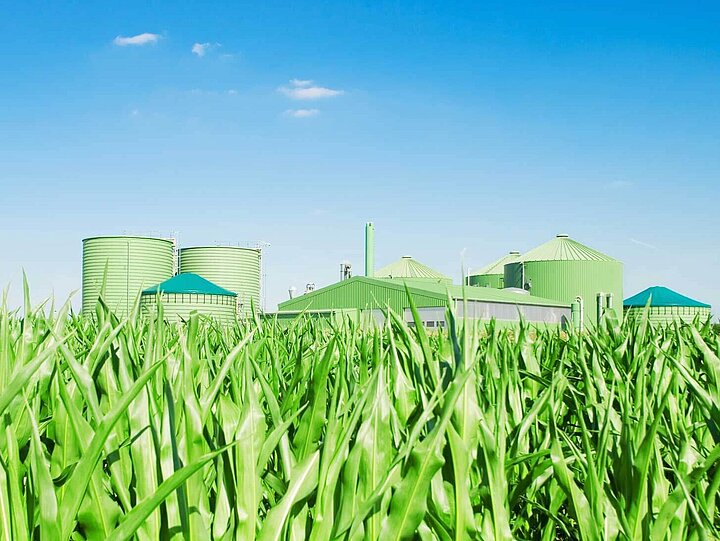Boosting our quality of life

Every day, our lives are accompanied by tech innovations that shape our quality of life in a host of different ways. At the same time, that same technology is increasingly fading in the background – a normal and natural feature that we integrate into our everyday lives and rely on more and more. One example of a technology that is almost invisible in everyday life, despite its crucial importance, is elemental or stable isotope analysis. Without us even noticing, these analysis methods have an enormous effect on our quality of life. Their application spans across a diverse range of areas, including healthcare, the food industry and environmental sustainability – all among the 11 key indicators in the Organisation for Economic Co-operation and Development’ (OECD) Better Life Index.1
But improving our quality of life first requires us to understand the most basic of questions. No, not the philosophical question of the meaning of life, but a much more elementary question: What binds the world’s innermost core together? It is a question that Johann Wolfgang von Goethe asked himself in the early 19th century in his work “Faust.” Indeed, you could argue that the question was behind the work of the early pioneers of elemental analysis, such as Justus von Liebig, Robert Boyle and Maximilian Dennstedt. It is a fundamental principle that still holds for elemental analysis to this day. After all, all life is made up of the six elements C, H, N, O, S and P – carbon, hydrogen, nitrogen, oxygen, sulfur and phosphorus.
That is why we at Elementar have set ourselves the goal of breaking life down into its elements so as to understand it, explain it and preserve it. We believe that the principle of life should not remain a topic of science and research, but must also be preserved for future generations. With far-reaching effects on all of our lives, these contributions also hold fascinating stories. Stories that we want to share with you here on our blog. After all, it is always good to know that…

… our drinking water is clean
The United Nations recognizes access to clean drinking water as a human right that is “the most basic human need for health and well-being.”2 But this right is by no means enjoyed by everyone. And elemental analysis is also used in those countries that do guarantee access to clean drinking water. It has two key functions here: Firstly, to analyze the drinking water itself in order to monitor its quality and ensure that it is not contaminated; secondly, wastewater analysis to ensure that natural sources for drinking water are not polluted with sewage. The key value for quality control here is the screening parameter TOC (total organic carbon).
The question of whether TOC analysis opens up new possibilities for wastewater treatment and analysis compared to biological oxygen demand (BOD) or chemical oxygen demand (COD) analysis is answered by Calum Preece, Product Manager for the environmental market in his article that has been published in the meantime.
… products contain what they say they do
The latest food and nutrition trends3 are a direct reflection of consumer demand for climate-friendly, sustainable and safe foods. To meet this demand, many food manufacturers are completely rethinking their business strategies to offer more organic, vegetarian and plant-based options.
As consumers who prioritize sustainable foods and organic products, we are more than happy to spend that little bit extra if it means we can enhance our diets with healthier, better-quality food that is organically produced and more nutrient-rich. But how can we be sure that the products we place in our shopping carts really are organic?
Experts and laboratories like Professor Yu-wei Yuan and his team at the Zhejiang Academy of Agricultural Sciences (ZAAS) are commissioned to literally place such products under the microscope using isotope-ratio mass spectrometry (IRMS). “Traces of pesticides, the content of heavy metals and other parameters must conform to requirements, and feedstocks must be of organic origin,” explains Professor Yu-wei.
But organic products are not the only ones increasingly being falsely marketed. Honey in particular is one of the most common counterfeits, marketed as a 100% natural product. So much so that Netflix dedicated an entire episode of its series Rotten to the honey business – or rather the fake honey business (season 1, episode 1: Lawyers, Guns & Honey). Luckily, there are laboratories such as Intertek that use complex analysis methods to determine where sugar has been added or whether honey declared as Manuka honey really does come from New Zealand. Nuclear magnetic resonance spectroscopy (NMR spectroscopy) analysis is typically used for this. Other advantages of nuclear magnetic resonance spectroscopy include the ability to analyze samples without the need for database validation. Take a look at our whitepaper for a more detailed comparison of the two analysis methods.
In his article “Is our food really what it says?”, Mike Seed looks at other foods (including water, tea and wine) that are victims of “food fraud.”
… energy can be generated from the compost bin
The energy crisis has shown us just how crucial the expansion of renewable energies is. Scientists and researchers from all over the world have dedicated themselves to this topic, focusing on finding new and efficient ways to produce climate-neutral energy. A project group at Ostwestfalen-Lippe University of Applied Sciences and Arts is one example. Spearheaded by Prof. Hans-Günter Ramke, head of the Faculty for Waste Management and Landfill Technology, the team has developed a method for converting sewage sludge and manure into a potentially useful biochar product. To find out exactly how they did it, take a look at our article “Carbon from organic waste” by Moritz Kreinbihl, Product Manager for the energy market.
One thing is clear
Technology such as that used for elemental or stable isotope analysis might not look like much, but its role in shaping our quality of life is monumental. It helps us to live in a safer and more sustainable world. With precision measurements and constant technological advancement of analysis techniques, we can better understand and overcome the challenges we face. We can't wait to see how else the field of analytics will help improve our lives in the future.
************
P.S.: Don’t want to miss out on new stories? Subscribe to our newsletter to read about the latest exciting topics from the field of analytics!
Do not miss any new articles
NEWSLETTER
We will constantly publish new blog articles. Register for our newsletter to stay up-to-date and get informed about latest blog articles, news and trends.






